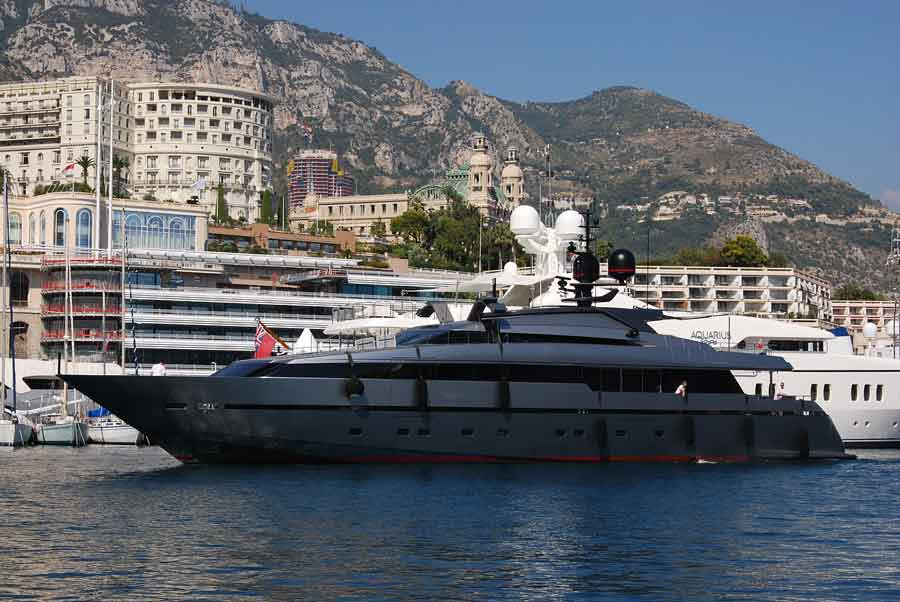What is incentive travel? How are incentive programs, trips, and events different from conference and meeting planning? In this section we'll look at the definition of incentive travel, including: examples of incentive travel programs, how to become an incentive travel planner, an incentive travel planner job description, career advice, employment information, and the pros and cons of being an incentive travel planner in this sector of the events industry.
A guide to incentive travel programs; definitions, descriptions, and examples.
Why become an incentive travel planner or destination manager? Career advice and employment information.
What does an incentive travel planner do? Read a real incentive travel planner job description by Martin Turner, former Director of Travel, International Travel Group, and former Global Head of Events, Credit Suisse.

Pros and cons of incentive travel by Martin Turner, former Director of Travel, International Travel Group, and former Global Head of Events, Credit Suisse.

What does a destination manager do? Read a real destination manager job description by Jennifer Miller, Partner and President, ACCESS Destination Services.

Pros and cons of destination management careers by Jennifer Miller, Partner and President, ACCESS Destination Services.

As explained in the previous section, Meeting Planning / M.I.C.E, incentive travel is just one type of corporate event that is often grouped together under the acronym M.I.C.E (Meetings, Incentives, Conferences, Exhibitions) due to the similarities and over-lapping nature of these events.
Although the content of an incentive travel program is very different to other types of meetings—in that the emphasis is on entertainment, activities, and socializing—the event planning process is very similar. Meetings and incentive programs both involve location planning, destination management, co-ordinating travel and accommodation, and creating a program of supporting events.
Meeting planners often find themselves working on a mix of meetings, conferences, and incentive travel programs, and in doing so will often call upon the services of a destination manager at a DMC (Destination Management Company). Destination managers are a type of event planner who offers local knowledge and resources to meeting planners in order to help deliver events in a particular region
Incentive travel is the reward element of an incentive, recognition, or loyalty program, which takes the form of an all-expenses paid trip with a program of scheduled events and activities.
Incentive, recognition, and loyalty programs (from here on referred to as just ‘incentive programs’) are used by companies as a motivational tool to achieve certain business objectives, for example to increase sales.
Participants—which might be the company’s employees, distributors / re-sellers, or customers—usually have to qualify by achieving a certain level of performance, pre-defined by the terms of the incentive program, e.g. achieving pre-set sales targets.
Those that meet the relevant criteria are then rewarded by taking part in the incentive travel trip (sometimes referred to as the ‘award’). These are usually group trips with a set itinerary where all those qualifying take part in the same program of events and activities, however individual incentive trips are also used by some companies.
To fulfill the award, the company will use some form of event / meeting planner to co-ordinate the trip and design the itinerary, including all travel arrangements, accommodation, receptions, dinners, activities, excursions, entertainment, and special events.
Often, this will involve the meeting planner hiring a Destination Management Company (DMC), located in the city where the event is being held, to assist them in booking and managing local elements, such as restaurants, venues, transport, staffing, production, décor, entertainment, activities, and excursions.
Companies might create incentive programs for a number of different reasons, some examples are:
Incentives are a very effective way to drive sales. An incentive program might be aimed at a company’s employees i.e. the sales team, or its distributors / re-sellers.
For example, a car manufacturer might create an incentive program for its dealers, whereby they have to meet a certain sales target each month. At the end of the term of the program, a year perhaps, those that made the required amount of sales will be rewarded by coming together with management executives, and the other qualifying dealers, to attend the award trip.
This might consist of a three-day trip to Monte Carlo during the Monaco Grand Prix with a cocktail reception on a yacht, a private dinner at the world famous casino, followed by leisure activities and excursions such as sailing, wine tastings, golf, or a private tour of The Prince’s Palace.

Group travel can also be used as part of an employee reward and recognition program. Whereas incentive programs aim to inspire or influence someone’s efforts, the purpose of rewards and recognition programs are to reinforce certain behaviors.
A qualifying employee may be deemed to be improving customer service, living the corporate values, or meeting productivity goals. A company might create a group travel program ‘award’ as a way to engage with their employees, recognize performance, and reward top achievers.
The format is similar to those held for sales incentives in that, as a reward, the emphasis is on leisure activities, excursions, group dinners, and receptions. It might be a trip to Sir Richard Branson’s private game resort, Ulusaba Lodge in South Africa, with a program that includes safaris, hot air balloon rides, helicopter tours over canyons, and outdoor dinners and receptions with the finest African cuisine.
Group travel is often used for employee motivation; to engage people, change attitudes, build morale, and embed new values. This might be to address low productivity, employee turnover, and poor customer service, or to foster teamwork and introduce new products. In this case, a group travel program might be created in order to inspire employees through an itinerary of experiential activities, which the group share together as a team. These activities are specifically designed to deliver engagement, learning, and action that will translate back to the work environment.
For example, in addition to various dinners and leisure activities, one company’s program included a team building session called ‘Helping Hands’ where employees were given a box of parts and an instruction booklet. Working as a team they had to assemble an object, which later transpired to be a prosthetic hand, which was then given to a land mine victim who had lost their hand.
Another variation of an incentive program is when group travel is used to reward customer loyalty and repeat business. I have actually been on the receiving end on an incentive program organized by the parent company of a group of event industry suppliers.
The parent company owns a caterer, a venue finding company, a staffing agency, and a technical production company—amongst others. They have an incentive program whereby their customers, event companies such as my own, Left Field Productions, have their annual spend with any of the parent company’s businesses converted into points. Once a certain amount of points is accrued, my company qualifies for between one and three places on a group travel ‘award’.
One year this included a three-day trip to Portofino, Italy, where we stayed in the luxurious Hotel Splendido, which sits on a hillside overlooking the Mediterranean and is frequented by celebrities such as Madonna, George Clooney, and Elizabeth Taylor.
It’s a common misconception that incentive travel is just a paid vacation, and while some are, more often than not companies create awards where the program is specifically designed to maximize the amount of time the group spend together.
It’s not just about sending people to an amazing destination with their colleagues, it’s about creating an environment where they can celebrate their accomplishments with their peers, feel part of an elite group, bond with and get personal recognition from management executives, and use the opportunity to share, learn, network, and form deeper relationships in a relaxed leisure environment.
First, it’s important to differentiate between the ‘incentive program’ and the ‘incentive travel program’ because the two terms are often used interchangeably despite meaning two different things.
The ‘incentive travel program’ is what, up until now, we have been referring to as the ‘award’; it’s the reward element of the entire ‘incentive program’. Among event planners however, the ‘award’ is generally referred to as the ‘incentive travel program’ or just the ‘travel program’. It’s not really regarded as an event, because it’s usually a lot more than that; it’s a program of events and activities over several days or even a week.
The ‘incentive program’ is the entire scheme that leads up to and includes the ‘award’. The ‘incentive program’ might start up to a year in advance, often it’s unveiled at the end of the current program—perhaps at an awards dinner on the final evening—in order to build excitement.
Let’s look at how both might run in chronological order:
The incentive program is often unveiled on the final night of the previous year’s incentive travel program.
‘Teasers’ are sent out to participants to build anticipation of the official launch. For example, if the destination is going to be a beach resort, then a flip-flop might be sent to each participant with a cryptic clue attached. Promoting an incentive is all about building excitement, so often the way it is communicated needs to be creating and engaging.
Official announcement, information packs, and enrolment kits are sent out for participants to ‘sign up’ to the incentive program. These packs will outline the terms and conditions of the program, with information on what is required to qualify, for example defining sales targets.
During this period, which could last up to a year, participants are required to meet the pre-defined criteria that would enable them to qualify for the award, for example hitting sales targets.
More teasers and reminders will usually be sent out over the course of the qualifying period to encourage the participants to meet the necessary criteria.
Qualifiers or ‘winners’ announced. In some cases, physical trophies or other gifts are handed out at this stage, in advance of the actual ‘award’ trip. Shortly after, travel arrangements will be communicated to the qualifiers.
The incentive travel program itself might consist of a number of different events and activities. These might include cocktail reception, lunches, dinners, dances, award ceremonies, team building exercises, leisure activities, shopping trips, tours, excursions, insights into local culture, or working with local charities.
Sometimes meetings and workshops are also incorporated, depending on the type of incentive program, although these are usually short and informal as the emphasis is generally on creating relaxed, leisure environment—especially when the travel program is intended as a reward.
An example of an incentive travel program might be:
Guests might travel separately from different locations or, alternatively, group travel arrangements will be made where everybody takes the same flight together.
Upon arrival in the destination city, participants might be greeted at the airport by local representatives, before transferring to their hotels. Often the creative elements of the program start here.
For example, when I attended an incentive program in Monaco, we were flown from London to Nice, South of France, and had expected to be driven on to our hotel in Monte Carlo. However, on arrival in Nice, we discovered a series of helicopters had been laid on to transfer us the rest of the way.
Participants are then greeted at the hotel, checked in, and have some time to settle in before the evening’s welcome dinner. Typically a welcome pack and gift is often left in room.
Welcome cocktail reception. An opportunity for everyone to meet and network, perhaps on a private terrace at the hotel, possibly with live entertainment from musicians and performers. Usually the meeting planner will add in a few extra creative touches to make the reception a little more special, such as a wine or tequila tasting.
Open-air dinner in the hotel’s private gardens overlooking the sea, possibly with after-dinner entertainment and/or some speeches from the hosts. Often the first evening’s dinner is held ‘on-site’ at the hotel as people are tired from travelling.
Often, on the first night, this is just informal after-dinner drinks in the hotel bar as most people are tied from travelling. However, depending on the group, there might be cigars and cognac laid on, or a private lounge area with cocktails.
Breakfast at the hotel, perhaps followed by an informal meeting or presentation regarding upcoming activities.
Excursion to local attractions, sightseeing, and shopping. These might be cultural activities or the opportunity to take part in authentic ‘real life’ experiences typical of the location—such as exploring the Hutong area of Beijing by bicycle and having tea with locals in their homes.
Group lunch at a restaurant or special venue. Again, this is an opportunity for the meeting planner to get creative perhaps by obtaining access to a venue or location that's typically not accessible to the general public—such as lunch on a movie set or in private rooms at a royal palace.
Afternoon of leisure activities, which depending on the group, might be traditional activities, such as golf or a spa day. Alternatively, it could be more unusual activities like cage diving with sharks or bulldozer adventure playground days. Often, the meeting planner will try to obtain some sort of unique or VIP access, such as getting to kick around footballs with a professional team and star players at their local stadium.
The second day's evening cocktail reception and dinner typically takes place ‘off-site’ at a restaurant or private venue, usually with entertainment. Again this might involve some sort of unusual venue, such as a USO themed event on a real naval base.
Option to continue on to a local nightclub/casino.
Breakfast at the hotel, perhaps followed by an informal meeting.
More leisure activities, trips, or opportunity to experience local culture. Depending on the group, this could be anything from cave tours, to zero gravity flights at a NASA training facility, to private backstage tours of a Broadway show and an opportunity to meet the cast.
Group lunch at a restaurant or special venue.
Team building / experiential activity—sometimes with a connection to the local community or a charity. This might be building a park in the desert for a children's home or the Helping Hand's activity mentioned previously where the group make prosthetic hands to be given to land mine victims who've lost their hand
Cocktail reception, gala dinner, awards ceremony, and dancing ‘off-site’ at a private venue. Next year's destination/incentive program revealed.
Breakfast at hotel.
Hotel check-out, transfers to airport.
Group lunch at a restaurant or special venue en route to airport
Return flight home
Obviously, this format only outlines the bare bones of a travel program. The challenge for the event planner is in making these programs as creative and engaging as possible—especially when you have to create something new and different every year.
From the meeting/event planner’s perspective, incentive travel is all about creating unique, high-quality experiences.
The destination, accommodation, and activities might be amazing in their own right. For example, a three night trip to Hawaii with an itinerary that includes a sunset cocktail cruise, a private dinner on the beach, activities such as surfing, golf, waterfall hikes, hula lessons, and stargazing treks. It might also include excursions to the Diamond Head volcanic crater and Pearl Harbor, before a closing dinner and awards ceremony on the final night.
However, a good planner will make sure they include some extra special moments, private access to people and places, or exclusive experiences that the guests could not create themselves—either through lack of financial resources, local knowledge, contacts, or even imagination.
One leading incentive travel company created a trip to New Orleans for one of its clients, a Fortune 500 company. In addition to the usual 5 star accommodation and the finest local cuisine, the company added some extra touches to make the trip even more special. These included a private parade along Bourbon Street, followed by a dinner on the field of the Superdrome—where they were greeted by a marching band with their names circling on the ribbon board and their photos on the Jumbotron. They even had the chance to toss a few footballs around the pitch.
The following day, to connect with the local community, the group spent the afternoon planting trees and bushes at a newly rebuilt elementary school, which had been devastated by Hurricane Katrina. The playground and the landscaping that the group contributed to were the final touches to the redevelopment that had been seven years in the making.
Whether it’s providing exclusive access to something not readily available to the public, taking part in authentic ‘real life’ experiences typical of the local culture, or giving something back by connecting with the local community, those moments create memories that go far beyond being a business trip or vacation—and is what makes incentive travel work as a motivational tool.
REFERENCES
1. Anatomy of a Successful Incentive Travel Program White Paper, Melissa Van Dyke, Incentive Research Foundation
Why become an inventive travel planner or destination manager? Career advice and employment information.